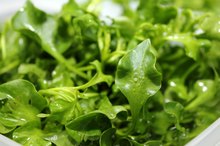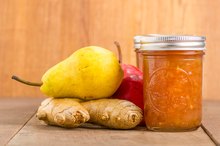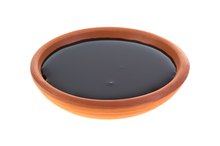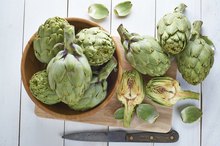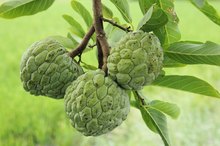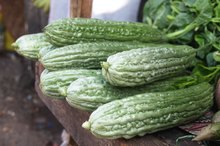How to Blanch Kale
Members of the botanical genus Brassica are known for their health benefits, but kale is particularly outstanding. The green, leafy, cruciferous vegetable is loaded with nutrients including calcium, vitamin C, folate and dietary fiber. Additionally, the leaves are an excellent source of lutein and zeaxanthin, which promote eye health. With its tough leaves and bitter taste, kale can be difficult to stomach. A quick boil, called blanching, will tenderize the leaves without stripping nutrients. Season the blanched kale with lemon zest for a light, flavorful dish.
Place the leaves on a cutting board and use a sharp knife to remove the tough center stem.
How to Cook Watercress
Learn More
Slice the leaves into smaller pieces and wash them thoroughly under cool, running water. Then sprinkle them with a little baking soda or baking powder to reduce toughness.
Bring a stock pot of water to a boil. While you're waiting on the water, fill a large bowl with ice and water and set it to the side.
How to Blanch Broccoli
Learn More
Add the kale and a sprinkling of salt to the pot 1. Boil for four minutes, then immediately scoop the leaves out of the pot with a slotted spoon and into the ice water bath.
Squeeze the water out of the blanched leaves. Eat the kale plain or saute or stir-fry it with other vegetables.
Tips
Select bunches of kale with small, dark green leaves. Avoid leaves with brown discoloration or soft spots.
Warnings
Because of its high vitamin K content, kale may not be safe for individuals on blood thinners or other clotting medications. Additionally, kale may suppress thyroid function, according to Deirdre Orceyre of the Center for Integrative Medicine at the George Washington University Medical Center. Talk to your physician before adding kale to your diet.
Related Articles
References
- University of Vermont: Kale - Add to Your Garden and Nutrition Plan
- New York Times Health: Kale: The Winter Green
- HT Health: Kale: Good Nutrition for You, Just Don't Overdo It
- Kale, raw. USDA FoodData Central. Updated April 1, 2019
- Tapsell LC, Batterham MJ, Thorne RL, O'Shea JE, Grafenauer SJ, Probst YC. Weight loss effects from vegetable intake: a 12-month randomised controlled trial. Eur J Clin Nutr. 2014;68(7):778–785. doi:10.1038/ejcn.2014.39
- Blekkenhorst LC, Sim M, Bondonno CP, et al. Cardiovascular Health Benefits of Specific Vegetable Types: A Narrative Review. Nutrients. 2018;10(5). doi:10.3390/nu10050595
- Lin T, Zirpoli GR, McCann SE, Moysich KB, Ambrosone CB, Tang L. Trends in cruciferous vegetable consumption and associations with breast cancer risk: A case-control study. Curr Dev Nutr. 2017;1(8):e000448. Published 2017 Jul 18. doi:10.3945/cdn.117.000448
- Vitamin K. National Institutes of Health. February 2020.
- Fusaro M, Mereu MC, Aghi A, Iervasi G, Gallieni M. Vitamin K and bone. Clin Cases Miner Bone Metab. 2017;14(2):200–206. doi:10.11138/ccmbm/2017.14.1.200
- Vitamin C. Fact Sheet for Professionals. National Institutes of Health Office of Dietary Supplements. Updated February 27, 2020
- Antioxidants: In Depth. National Institutes of Health. National Center for Complementary and Integrative Health. Updated November 2013
- Kale. Natural Medicines Database. The Therapeutic Research Center. Updated 4/13/2020
- Fabbri ADT, Crosby GA. A review of the impact of preparation and cooking on the nutritional quality of vegetables and legumes. International Journal of Gastronomy and Food Science. 2016;(3):2-11. doi:10.1016/j.ijgfs.2015.11.001
- Labensky, SR, Hause, AM. On Cooking: A textbook of Culinary Fundamentals. 3rd ed. Upper Sadle River, NJ: Prentice Hall, 2003: 618.
Tips
- Select bunches of kale with small, dark green leaves. Avoid leaves with brown discoloration or soft spots.
Warnings
- Because of its high vitamin K content, kale may not be safe for individuals on blood thinners or other clotting medications. Additionally, kale may suppress thyroid function, according to Deirdre Orceyre of the Center for Integrative Medicine at the George Washington University Medical Center. Talk to your physician before adding kale to your diet.
Writer Bio
Carolyn Robbins began writing in 2006. Her work appears on various websites and covers various topics including neuroscience, physiology, nutrition and fitness. Robbins graduated with a bachelor of science degree in biology and theology from Saint Vincent College.
